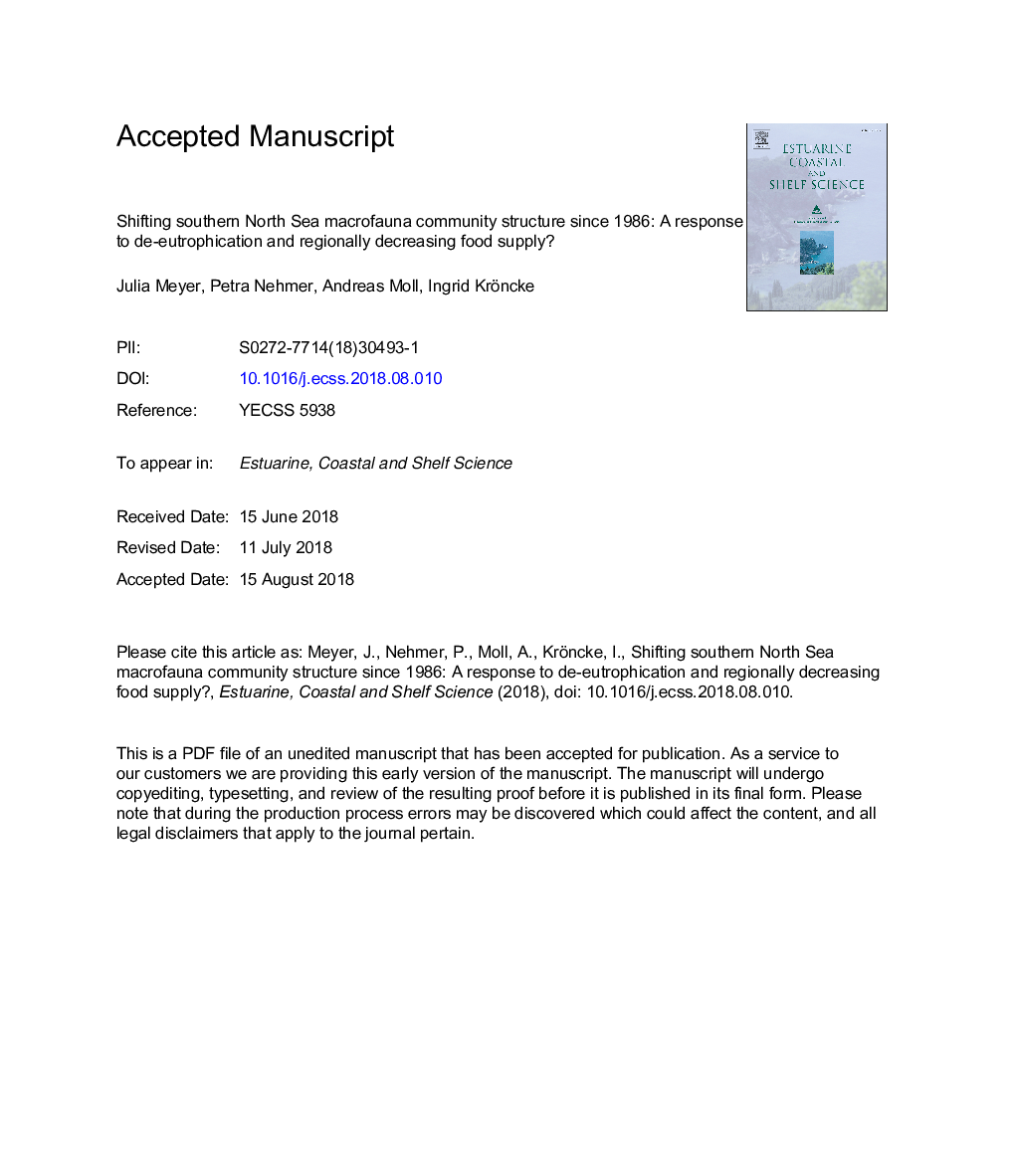| کد مقاله | کد نشریه | سال انتشار | مقاله انگلیسی | نسخه تمام متن |
|---|---|---|---|---|
| 8884595 | 1626590 | 2018 | 43 صفحه PDF | دانلود رایگان |
عنوان انگلیسی مقاله ISI
Shifting south-eastern North Sea macrofauna community structure since 1986: A response to de-eutrophication and regionally decreasing food supply?
ترجمه فارسی عنوان
تغییر ساختار جامعه ماکروفاآن در شمال غربی جنوب شرقی از سال 1986: پاسخ به دئوتروفیزاسیون و کاهش عرضه مواد غذایی در
دانلود مقاله + سفارش ترجمه
دانلود مقاله ISI انگلیسی
رایگان برای ایرانیان
کلمات کلیدی
زیست توده فیتوپلانکتون، محصول اولیه، دمای سطح دریا، حالت تغذیه،
موضوعات مرتبط
مهندسی و علوم پایه
علوم زمین و سیارات
زمین شناسی
چکیده انگلیسی
Since the second half of the 20th century drastic changes were found within the marine environment, mostly driven by anthropogenic and climatic pressures. Within this study, the long-term variability of south-eastern North Sea macrofauna community structure was analysed on a large spatial extent, to examine effects of increasing sea surface temperature, decreasing pelagic and benthic primary production and phytoplankton biomass, together with de-eutrophication effects since the late 1980s. Macrofauna data from the 1986 North Sea Benthos Survey and the 2000 North Sea Benthos Project were reanalysed and compared with present data from 2010 to 2015. A stable spatial distribution of four main macrofauna communities was found, based on the environmental parameters depth, sediment composition, and tidal parameters. Diversity and taxa numbers remained stable since 1986. However, in 2010-2015, mean abundance and biomass of offshore waters had decreased slightly, while at the coastal nearshore areas and parts of the Oysterground a significant increase was found. Simultaneously, a spatial shift in maximum mean abundance and biomass from the Dogger Bank and Oysterground in 1986 towards the North Frisian coast in 2000 and 2010-2015 was found. Changes were probably driven by de-eutrophication effects in line with food limitation caused by decreasing phytoplankton biomass and pelagic and benthic primary production that strengthen the dominance of opportunistic tube-living taxa such as Phoronis spp. and Spiophanes bombyx. Synergistic effects of increasing sea surface temperature, ongoing seabed degradation, and predation by small non-target fish species caused distinct regionally different changes in characteristic species and dominance structure.
ناشر
Database: Elsevier - ScienceDirect (ساینس دایرکت)
Journal: Estuarine, Coastal and Shelf Science - Volume 213, 30 November 2018, Pages 115-127
Journal: Estuarine, Coastal and Shelf Science - Volume 213, 30 November 2018, Pages 115-127
نویسندگان
Julia Meyer, Petra Nehmer, Andreas Moll, Ingrid Kröncke,
